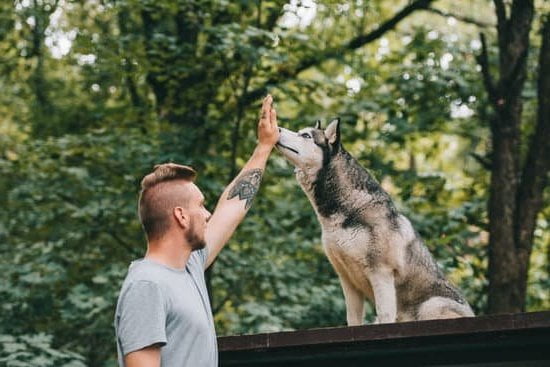There is a lot of debate surrounding the use of crates for dogs, with many people believing that they are cruel and inhumane. However, when used correctly, crates can be a very useful tool for training dogs and helping to keep them safe and secure.
If you are thinking about crate training your dog, the first step is to get him used to the idea of being in a crate. You can do this by putting a toy or treat in the crate and then letting your dog go into the crate to get it. Once your dog is comfortable going into the crate, you can start closing the door for short periods of time.
Once your dog is comfortable being in the crate with the door closed, you can start using the crate for training purposes. One of the most important things to remember is that the crate should only be used for short periods of time. Dogs should not be left in crates for long periods of time, as this can lead to behavioural problems.
One of the most common uses for a crate is as a place to put a dog when you are not able to watch him. This can be useful for when you are cooking dinner, or when you have to leave the house for a few hours. It is also a good idea to put your dog in the crate when you are going to bed, as this will help to keep him safe and secure during the night.
If you are using the crate for training purposes, there are a few things that you can do to help your dog learn how to stay in the crate. One of the most important things is to be consistent with your commands. If you tell your dog to stay in the crate, you need to make sure that you always enforce this command.
Another thing that you can do to help your dog learn how to stay in the crate is to make the crate a comfortable place for him to be. You can do this by putting a soft blanket or toy in the crate. This will help your dog to feel comfortable and secure in the crate.
How To Crate Train A Dog For Potty Training
When housebreaking a dog, crate training is often recommended as the most effective method. The crate should be just large enough for the dog to stand up, turn around, and lie down in. Initially, the dog should be confined to the crate for very short periods of time, gradually increasing the time as the dog becomes more comfortable.
The key to successful crate training is to always make sure the dog has plenty of opportunities to go potty outside. A good rule of thumb is to never leave the dog in the crate for more than three hours at a time. If the dog has not had a chance to go potty recently, he may be forced to go in the crate, which will make the housebreaking process more difficult.
It is also important to make sure the dog is getting enough exercise and is eating properly. Dogs that are bored or that are not getting enough to eat are more likely to have accidents in the house.
How To Crate Train A Stubborn Dog
There are many reasons why you might want to crate train your dog. Perhaps you need to transport them in a crate, or you want them to have a safe place to sleep at night. Whatever the reason, it’s important to remember that not all dogs are easy to crate train. Some dogs will stubbornly refuse to enter the crate, or will try to escape as soon as possible.
If your dog is one of these, don’t worry – there are ways to make crate training work. The most important thing is to be patient and consistent. You may need to try a few different methods before you find one that works for your dog, but eventually, you will be able to get them to happily enter and exit the crate on their own.
The first step is to make sure that the crate is the right size for your dog. It should be big enough for them to stand up and turn around in, but not too big that they can pee or poop in one corner and sleep in the other. You should also make sure that the crate is comfortable – put a soft blanket or pillow in there for them to sleep on.
The next step is to get your dog used to the idea of the crate. Start by putting the crate in a place where your dog spends a lot of time, like next to their bed or in the living room. Put a few treats in the crate, and let your dog investigate it on their own. Once they’re comfortable with the crate, you can start to close the door for a few seconds at a time. Gradually increase the amount of time that the door is closed.
If your dog starts to whine or bark when the door is closed, don’t let them out until they calm down. This may take a while, but eventually, they will learn that they can’t get out of the crate until they’re calm. Once your dog is quiet for a few minutes, you can let them out.
If your dog is trying to escape the crate, put a piece of furniture in front of it so they can’t push it open. You can also try tying the crate shut with a rope or strap.
The most important thing is to be patient and consistent with your dog. Crate training can be a challenge, but it’s worth it when your dog is happily spending time in their crate.
Crate Training Bernese Mountain Dog
There is no need to be intimidated by crate training your Bernese Mountain Dog. It is one of the most effective ways to housetrain your dog and can also be used as a place for your dog to relax and rest.
When crate training your Bernese Mountain Dog, always start with a positive attitude. Make sure that you provide plenty of positive reinforcement when your dog does something correctly. This will help your dog to develop a positive association with the crate.
When you first start crate training, place the crate in a quiet, comfortable place in your home. Make sure that the crate is large enough for your dog to stand up, turn around, and lie down in. You may also want to place a soft blanket or towel in the crate.
Begin by placing your dog in the crate and giving him a treat. Once he is inside, praise him and close the door. Leave him in the crate for a few minutes, then let him out. Repeat this process a few times, gradually increasing the amount of time that your dog spends in the crate.
If your dog begins to whine or bark while in the crate, do not release him from the crate. Wait until he is quiet before letting him out. This will help him to learn that whining and barking will not get him out of the crate.
If you need to leave your dog in the crate for an extended period of time, make sure that he has plenty of water and a chew toy to keep him occupied.
The crate can be a valuable tool for housetraining your Bernese Mountain Dog. Make sure that you are patient and positive when crate training your dog, and always provide plenty of positive reinforcement when he does something correctly.
Crate Training A Dog With Severe Separation Anxiety
If you have a dog that suffers from severe separation anxiety, crate training may be the best way to help them feel more comfortable when left alone. Dogs with separation anxiety may become destructive, bark or whine excessively, or have accidents in the house when their owners are away. Crate training can help to minimize these behaviors by providing the dog with a safe and comfortable place to relax.
The key to successful crate training is to make the crate feel like a positive place for the dog. Start by putting a few favorite toys and treats in the crate, and allow the dog to explore it on their own. Once the dog is comfortable going into the crate, you can start to close the door for short periods of time. Gradually increase the amount of time the dog spends in the crate, always making sure they have plenty of water and access to fresh air.
If the dog starts to become anxious or destructive when left alone, you may need to consult with a behaviorist or trainer to help address the root of the problem. With patience and perseverance, however, most dogs can be successfully crate trained to help ease their separation anxiety.

Welcome to the blog! I am a professional dog trainer and have been working with dogs for many years. In this blog, I will be discussing various topics related to dog training, including tips, tricks, and advice. I hope you find this information helpful and informative. Thanks for reading!





